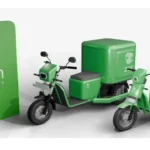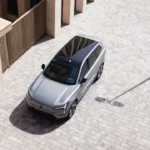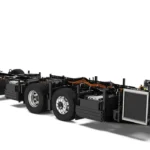Hyundai Motors just took covers off, their entry level EV. This new addition into Hyundai’s global EV lineup is a micro-SUV, which shares it’s underpinning with its ICE counterpart, Casper. Based on the modified platform of the Casper, this all-electric Korean entry-level micro-SUV, is engineered to go head-to-head with its conventional version in terms of the overall specifications and aesthetics.
Going by the nameplate Inster, this electrified micro-SUV has been launched globally, though it will not be making its way anytime soon to India as we already have another micro-SUV by name of Exter, developed on a shared platform of Hyundai Grand i10, widely popular as Hyundai-Kia K1.
In this article we’ll discover over, is the Inster just a mere electrified Casper or something more to it.
Design:
With a sustainable approach towards the world automotive mid-range buyer’s segment, the Inster does not only bring an electric powertrain under the hood of the Casper but also a sportier front fascia, hoisting a sequential LED side blinkers over a blacked-out bar, accompanied by a silhouette with a similar theme.
Drawing inspiration from its ICE derivative, the Inster showcases a circular LED daytime running lights (DRLs). A black rectangular piece situated between the DRLs holds the front camera, ADAS sensor and a charging port.
At the rear, the Hyundai Inster EV features striking pixel-themed taillights that stretch across the entire width, a centrally positioned Hyundai logo and circular taillamps, with the parking lights built into the rear bumper. The design is finished hoisting an integrated spoiler, diffuser, shark fin antenna and a high mounted stop lamp.
This combination of modern and retro elements provides the Inster a unique appearance.
Dimensions:
Matching the, appeal of the ICE Casper, boasting a longer platform stretched by 230mm, with 180mm added to the wheelbase, the Inster measures 3,825mm in length, 1,610mm in width, and 1,575mm in height, offering an extended wheelbase of 2,580mm.
The Hyundai Inster EV provides a boot space of 280 liters, which is expandable to 351 litres when the rear seats are folded down. The sides of the vehicle are characterized by prominent wheel arches and four-spoke alloy wheels. Other notable highlights include, rear door handles mounted on the pillars, roof rails and several sharp cuts and creases on the body.
Features:
Inside, the Inster EV departs from conventional Hyundai interiors, featuring a retro design with unique air-con vents. It comes equipped with dual 10.25-inch screens for the instrument cluster and a floating infotainment system, which comes compatible with wireless Android Auto and Apple Carplay, automatic climate control, a wireless charger, a three-spoke steering wheel with a drive mode selector, ventilated front seats, a 360-degree bird view camera, ambient lighting, a blind spot monitor, a single pane sunroof and an ADAS suite. These features combine to create a cabin which is tech-loaded and practically stylish.
Powertrain:
Hyundai offers the Inster with two battery pack options, a 42kWh and 49kWh. Both are paired with a single electric motor, producing 95 bhp for the smaller pack and 113 bhp with 147 Nm of torque for the larger pack.
The battery packs use nickel-cobalt-manganese (NCM) chemistry. Additionally, all Inster trims are equipped with a heat pump and 85 kw (DC) fast charging capabilities as standard.
The smaller 42kWh battery pack delivers an estimated range of around 300 km, with a 0-100 kmph acceleration time of 11.7 seconds and a top speed of 140 kmph.
Meanwhile, the larger 49kWh battery pack offers an estimated range of 350km, achieving 0-100 kmph in 10.6 seconds and reaching a top speed of 150 kmph.
The Hyundai Inster, won’t be coming to India but there might be an electric version of Exter into consideration for the world’s third largest auto

market later in future, which may launch after the Creta EV, likely sharing the powertrain from the Inster.
Hyundai India has recently announced on the expansion of their EV portfolio with the introduction of four new models, including the Creta EV. And as per the speculations, the External EV could be a part of the fleet in near future., looking at the burgeoning demand for the acti.ev platform underpinned Tata’s electric micro-SUV, the Punch.ev.






